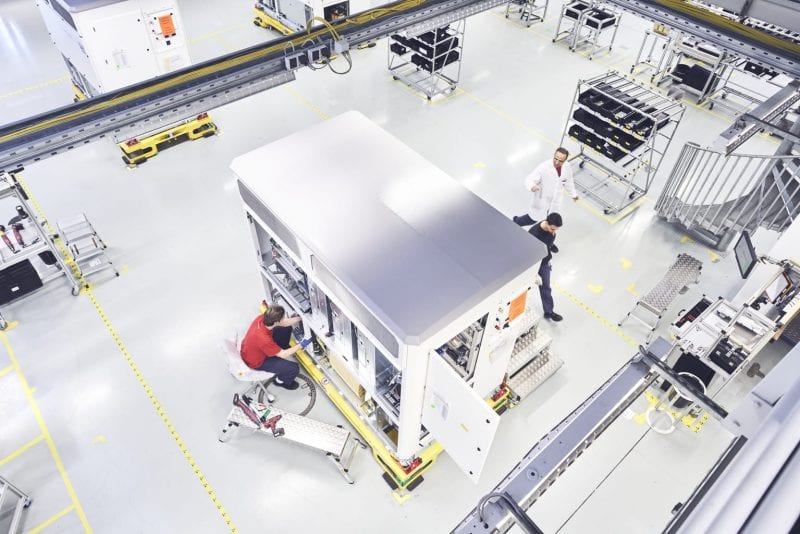More power for large PV power plants: since mid-August, SMA Solar Technology AG (SMA) has been delivering its new Sunny Central UP to PV projects all over the world. At 4.6MW, the central inverter for utility-scale PV power plants provides over 50% more power than its predecessors. In addition, integrated hardware and software features enable storage systems to be flexibly connected to PV power plants.
“The positive response from customers shows that with the Sunny Central UP, we are entirely meeting the needs of growing PV markets worldwide,” said Boris Wolff, Executive Vice-President of the Large-Scale & Storage Solutions business unit at SMA. “The capacities of our sustainable central inverter production and reliable supply of components at our headquarters in Germany mean that we are easily capable of meeting the high demand. The Sunny Central UP is used in projects worldwide with a current focus on major projects in the U.S.
“Starting in September, we will also be delivering the inverter as part of a turnkey container solution featuring perfectly matched medium-voltage technology. With this solution, SMA will be in a good position to profit from of the continued growth expected over the next few years, especially in the large-scale PV power plant segment,” Wolff added.
Flexible storage connection to PV power plants
In May 2019, the Sunny Central UP was one of the top crowd-pullers at SMA’s booth at the Intersolar trade fair. With an output of 4.6MW, it is one of the world’s most powerful central inverters. Its high power density and integrated features for flexibly connecting storage systems allow it to offer customers even more flexibility than before in the construction and expansion of large-scale PV farms.
Depending on the project requirements, storage solutions can be connected within the PV power plant on the dc side, the ac side or both — directly during construction of the power plant or during its subsequent expansion.







